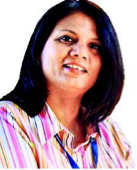Micropattern Gas Detectors and their application in High Energy Physics and Beyond (Distinguished Lecture)
Abstract:
Progress in micro-fabrication technology has facilitated the development of radiation detectors capable of economically covering large detection
volumes with a low material budget. Besides their widespread use in particle-physics and nuclear-physics experiments, gaseous detectors are
employed in many other fields: astro-particle research and applications. The invention of Micro-Pattern Gas Detectors (MPGD), in particular the
Gas Electron Multiplier (GEM), the Micro-Mesh Gaseous Structure (Micromegas), and more recently other micro pattern detector schemes, offers the potential to develop new gaseous detectors with unprecedented spatial resolution, high rate capability, large sensitive area, operational stability and radiation hardness. Given these recent developments, particle detection through the ionization of gas has resulted in large fields of application in future upgrades of particle, nuclear and astro-particle physics experiments. In my talk, I will focus on MPGDs and their exploitation in high-energy particle physics and societal applications such as medical imaging, material science, and homeland security.
Date and Time
Location
Hosts
Registration
Speakers
 Dr Archana Sharma of CERN (European Research Organization)
Dr Archana Sharma of CERN (European Research Organization)
Micropattern Gas Detectors and their application in High Energy Physics and Beyond
Abstract:
Progress in micro-fabrication technology has facilitated the development of radiation detectors capable of economically covering large detection
volumes with a low material budget. Besides their widespread use in particle-physics and nuclear-physics experiments, gaseous detectors are
employed in many other fields: astro-particle research and applications. The invention of Micro-Pattern Gas Detectors (MPGD), in particular the
Gas Electron Multiplier (GEM), the Micro-Mesh Gaseous Structure (Micromegas), and more recently other micro pattern detector schemes, offers the potential to develop new gaseous detectors with unprecedented spatial resolution, high rate capability, large sensitive area, operational stability and radiation hardness. Given these recent developments, particle detection through the ionization of gas has resulted in large fields of application in future upgrades of particle, nuclear and astro-particle physics experiments. In my talk, I will focus on MPGDs and their exploitation in high-energy particle physics and societal applications such as medical imaging, material science, and homeland security.
Biography:
Archana Sharma is a senior staff scientist at the CERN. Active in the field since 1989 mainly working on instrumentation especially gaseous detectors. She is the pioneer of simulations and experimentation on wire chambers, resistive plate chambers and micro-pattern gaseous detectors over last three decades. Graduated from BHU Varanasi, India, Archana received her Particle Physics Ph.D. from Delhi University in 1989 followed by a D. Sc from the University of Geneva, in 1996. She is an internationally recognized expert for her experimental work on gaseous detectors for research in high-energy physics. Archana has worked on several CERN experiments both on R&D being involved in designing and prototyping, and on running laboratories for construction, installation and commissioning of large scale gaseous detectors. She is the founder and leader of CMS GEM Upgrade Collaboration comprising about 200 members from 40 institutions and 14 countries, for exploiting one of the most sensitive detectors for trigger and tracking in the CMS Experiment at LHC. Sharma pioneered the development of micropattern detectors, her publications, review articles and book: a special volume on Instrumentation on Particle Physics edited by her are widely referred to and cited. She is the co-owner of patent on a family of detectors called THRAC – Timing and High Rate Capable devices. An IEEE Senior, Sharma has served on numerous committees and plays a vital role in advisory review boards for leading International Conferences, Publications and Symposia in the field. Archana is an examiner for European Commission Horizon 2020, an author and co-author of over 600 publications and is invited regularly for talks in international conferences and public addresses in various science and technology events.
Email:
Address:Esplanade des Particules 1 P.O. Box 1211, Geneva 23, Geneva, Switzerland


 Add Event to Calendar
Add Event to Calendar